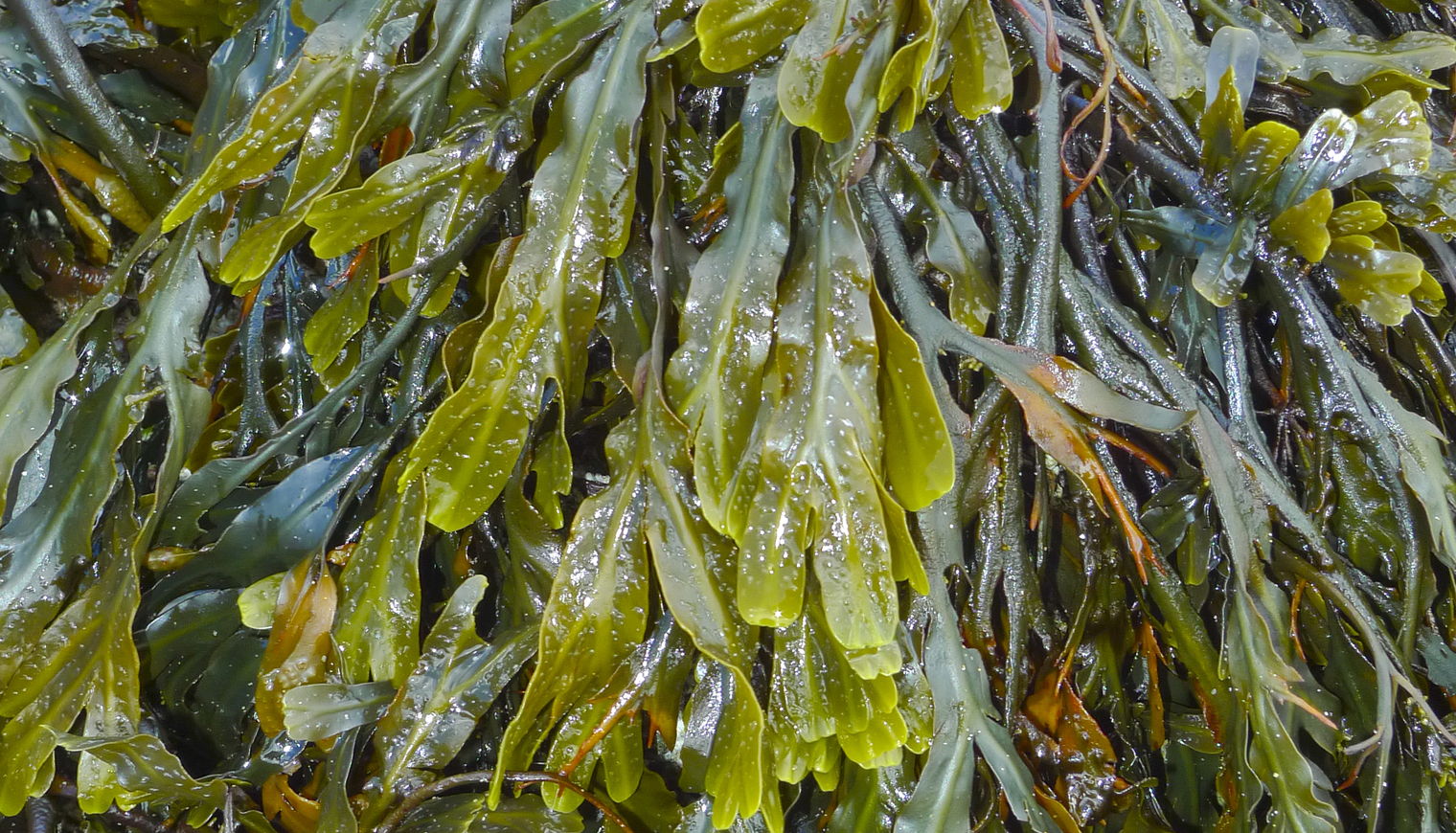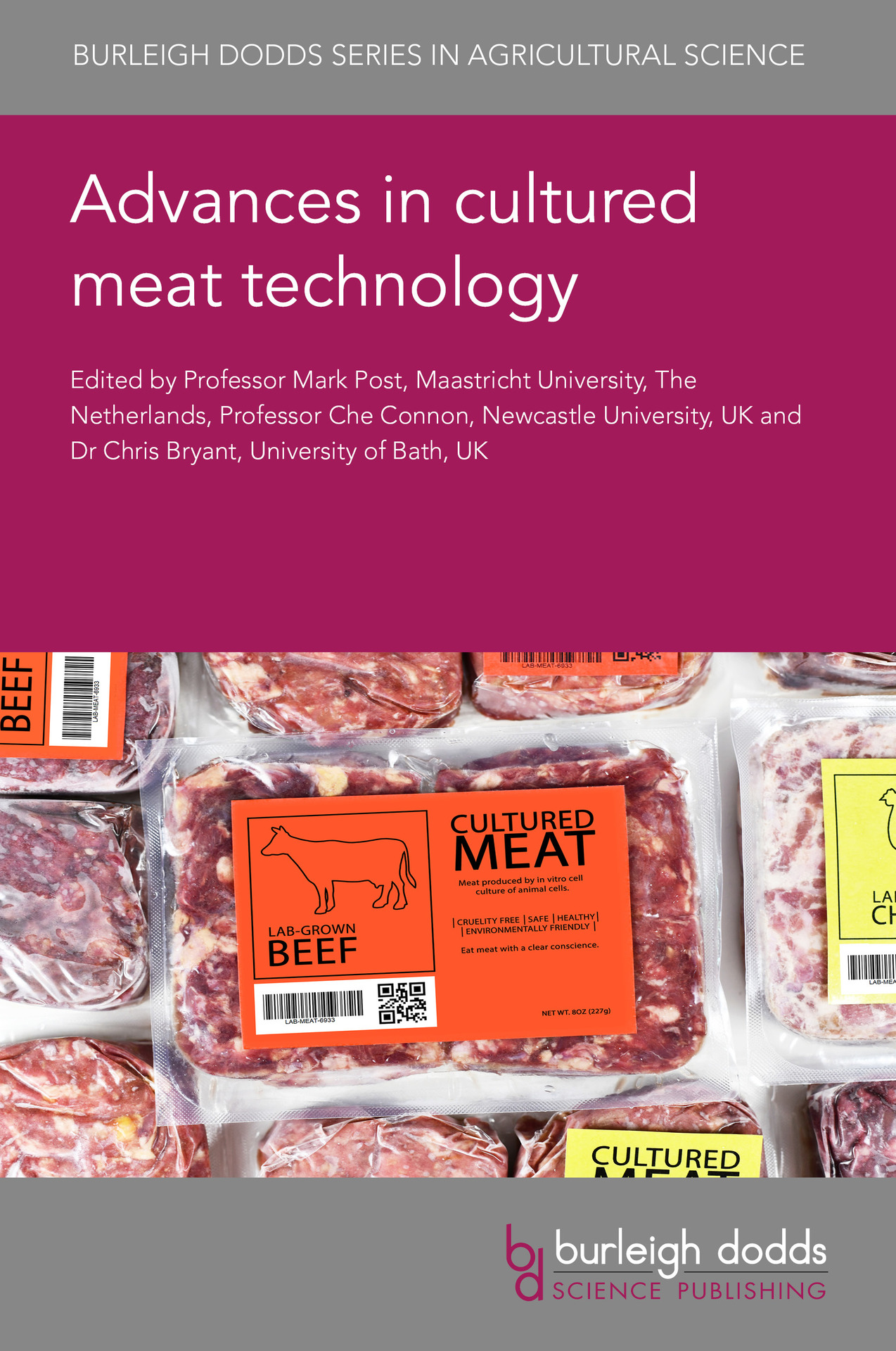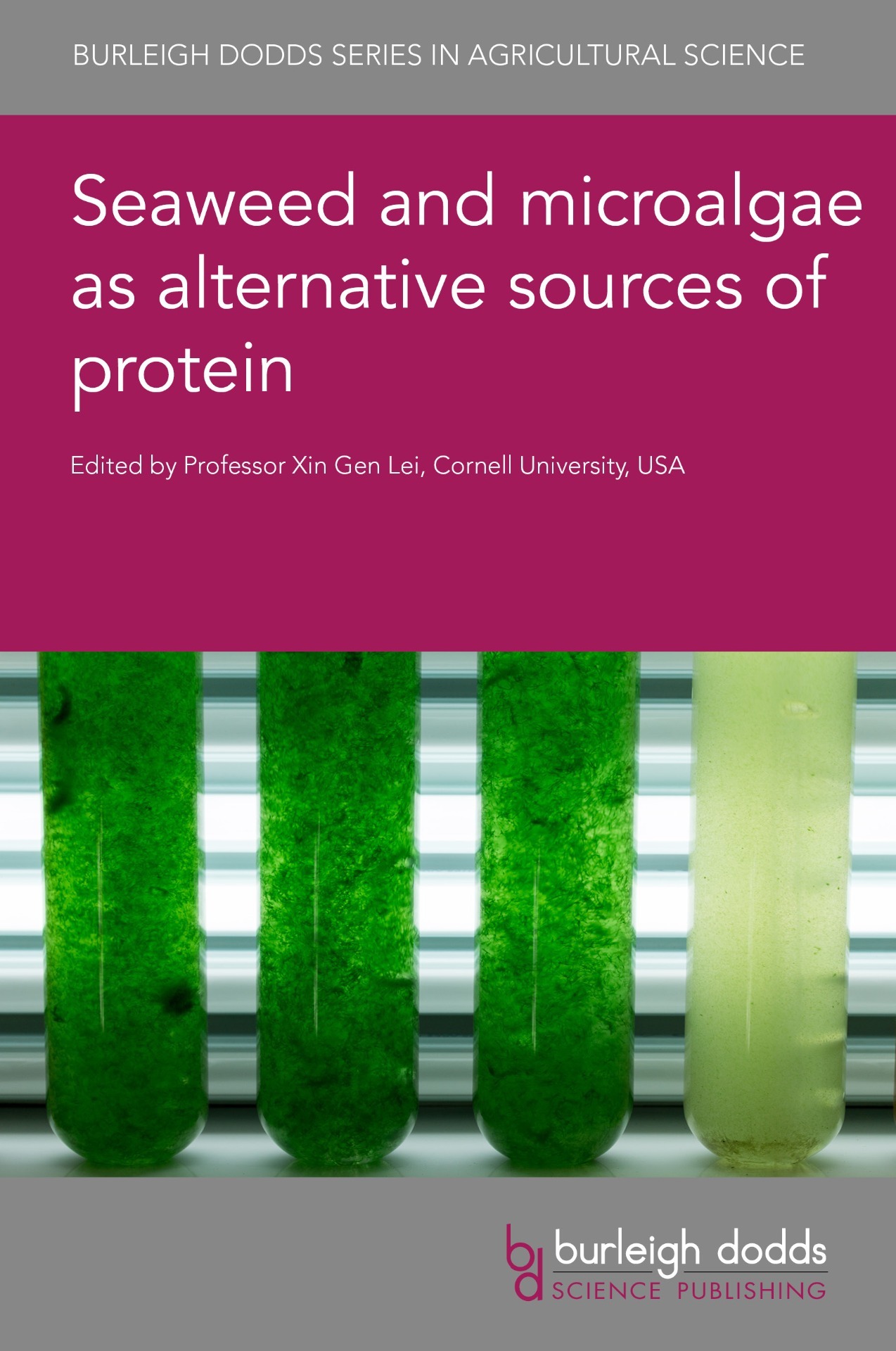Alternative nutrient sources
Advances in cultured meat technology Edited by Professor Mark Post, Professor Che Connon and Dr Chris Bryant
Part 1 General
1.Cultured meat technology: an overview: Johannes Le Coutre, University of New South Wales, Australia
2.Understanding the cultural context for cultured meat: Neil Stephens, University of Birmingham, UK
3.Creating a regulatory framework for cultured meat products: Singapore: Joanne Chan, Singapore Food Agency, Singapore
4.Creating a regulatory framework for cultured meat products: EU: Ermolaos Ververis, Nutrition Unit-EFSA, Italy
5.Creating an infrastructure for cultured meat production: Isha Datar, New Harvest, USA
Part 2 Technologies
6.Cell line sourcing and characterisation for cultured meat product development: Gareth Sullivan, University of Oslo, Norway
7.Developments in cell growth media for cultured meat product development: Andrew Stout, Tufts University, USA
8.Bioreactors for cell multiplication in cultured meat product development: Philipp Nold, Eppendorf Bioprocess Center, Germany
9.Tissue engineering using scaffolds in cultured meat product development: Shulamit Levenberg, Technion, Israel
10.Scaling cell production sustainably in cultured meat product development: Petra Hanga, University College London, UK
Part 3 Quality and sustainability issues
11.Developing cultured meat as a food product: Jette Young, Aarhus University, Denmark
12.Assessing the environmental impact of commercial cultivated meat production: Hanna Tuomisto, University of Helsinki, Finland
13.Consumer attitudes to cultured meat products: improving understanding and acceptance: Christina Hartmann, ETH Zurich, Switzerland
14.Techno-economic analysis of cultured meat production: John P. Ellersick, Next Rung Technology, USA
ISBN: 9781801463768 ¦ Pub date: September 2023 ¦ Extent: 400 pages ¦ Price £150/$195/€180
Seaweed and microalgae as alternative sources of protein Edited by Professor Xin Gen Lei
Table of contents
Part 1 Types of macroalgae and microalgae
1.Seaweed as a potential protein supplement in animal feeds: Sung Woo Kim, North Carolina State University, USA
2.Solar energy conversion, oxygen evolution and carbon assimilation in cyanobacteria and eukaryotic microalgae: Gaozhong Shen, The Pennsylvania State University, USA
3.Extraction of proteins and other functional components from red seaweed (Rhodophyta): Charlotte Jacobsen, National Food Institute - Technical University of Denmark, Denmark; Alireza Naseri, LACTOSAN A/S, Denmark; and Susan Løvstad Holdt, National Food Institute - Technical University of Denmark, Denmark
Part 2 Cultivation and processing
4.Developments in commercial scale farming of microalgae and seaweeds: Sarah E. Loftus and Zackary I. Johnson, Duke University, USA
5.Developments in algal processing: Schonna R. Manning and Reuben D. Gol, University of Texas at Austin, USA
6.Bioprocessing of microalgal proteins and their applications in the cosmetic, nutraceutical and food industries: Jordan Wilson, Ainnatul A. Ahmad Termizi, Elvis T. Chua and Peer M. Schenk, The University of Queensland, Australia
7.Environmental impacts of seaweed cultivation: kelp farming and preservation: Jean-Baptiste Thomas, KTH Royal Institute of Technology, Sweden; José Potting, EnviroSpotting, The Netherlands and KTH Royal Institute of Technology, Sweden; and Fredrik Gröndahl, KTH Royal Institute of Technology, Sweden
Part 3 Applications
8.Nutritional and anti-methanogenic potentials of macroalgae for ruminants: Deepak Pandey, Nord University, Norway; Morteza Mansouryar, University of Copenhagen, Denmark; Margarita Novoa-Garrido, Geir Næss and Viswanath Kiron, Nord University, Norway; Hanne Helene Hansen, University of Copenhagen, Denmark; Mette Olaf Nielsen, Aarhus University, Denmark; and Prabhat Khanal, Nord University, Norway
9.Developing seaweed/macroalgae as feed for pigs: Marta López-Alonso, Universidade de Santiago de Compostela, Spain; Marco García-Vaquero, University College Dublin, Ireland; and Marta Miranda, Universidade de Santiago de Compostela, Spain
10.Microalgae: a unique source of poultry feed protein: Sahil Kalia, Andrew D. Magnuson, Guanchen Liu and Xin Gen Lei, Cornell University, USA
11.Developing macroalgae and microalgae as feed for fish: Mo Peng, Jiangxi Agricultural University, China; Chunxiang Ai, Xiamen University, China; Zhi Luo, Huazhong Agricultural University, China; and Qinghui Ai, Key Laboratory of Mariculture (Ministry of Education of China), Ocean University of China, China
ISBN: 9781786766205 ¦ Pub date: September 2021 ¦ Extent: 344 pages ¦ Price £140/$180/€170









